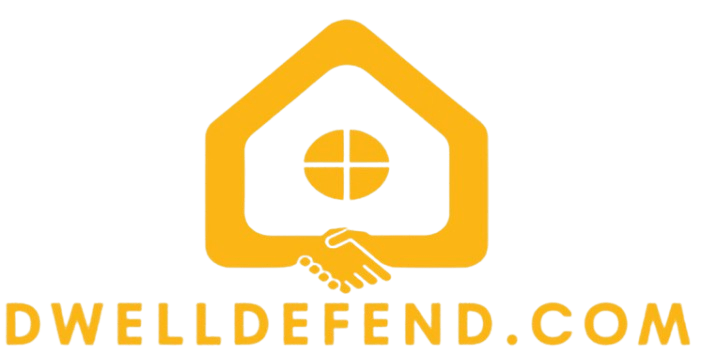How to Understand Your Home Insurance Policy
Home insurance is essential for homeowners. It offers financial security against unforeseen disasters and liabilities.
However, navigating the many coverage types can feel daunting. This includes dwelling coverage, personal property protection, and liability safeguards.
Grasping key terms, coverage limits, and deductibles is vital for choosing the right policy. Keep in mind that factors such as your location and claims history can significantly affect your premium.
This guide is designed to illuminate the crucial aspects of home insurance, empowering you to review and update your policy with confidence.
Contents
- Key Takeaways:
- What is Home Insurance?
- Types of Home Insurance Coverage
- Understanding Your Policy
- Factors That Affect Your Home Insurance Premium
- Tips for Reviewing and Updating Your Policy
- Frequently Asked Questions
- What is a home insurance policy and why is it important?
- What does a typical home insurance policy cover?
- How can I determine the amount of coverage I need?
- What are the different types of home insurance policies?
- What are some common terms and jargon used in home insurance policies?
- What should I do if I have questions or need to make changes to my home insurance policy?
Key Takeaways:

Understand the different types of coverage in your home insurance policy: dwelling, personal property, and liability. To navigate these complexities, learn how to understand your home insurance policy, familiarize yourself with key terms and definitions, and grasp how coverage limits and deductibles affect your premium.
Don’t wait! Review and update your policy today to ensure you’re fully protected against life changes that may affect your coverage needs.
What is Home Insurance?
Home insurance, often known as homeowners insurance, is an essential policy crafted to offer you financial protection against a range of risks tied to homeownership. This includes coverage for damage to your dwelling, protection for personal property, and liability coverage for any injuries that might occur on your premises.
With various options available, you can tailor your coverage to meet your specific needs. This ensures that your assets and interests are safeguarded against unforeseen events like natural disasters, theft, or accidents.
Typically, if you have a mortgage, your lender will require homeowners insurance to protect their investment in your property. This makes it a vital component of responsible homeownership.
Types of Home Insurance Coverage
Homeowners insurance offers a range of coverage types designed to safeguard your property. Standard policies cover categories from HO-1 to HO-8, each designed for specific risks homeowners face.
These insurance forms protect various elements, including your dwelling, personal property, and personal liability. They provide you with essential financial security against potential losses.
Dwelling Coverage
Dwelling coverage is a crucial part of your homeowners insurance. It is designed to shield the physical structure of your home from damages caused by fires, storms, and vandalism.
This coverage typically takes care of repair or rebuilding costs, providing you with financial security and peace of mind. It extends to everything from your roof and walls to built-in appliances and fixtures.
It’s important for you to be aware of potential policy exclusions. For example, damages from earthquakes or floods often aren’t included in standard policies.
The amount of coverage you need is usually based on the replacement cost of your home. Regularly reviewing these figures is wise to ensure that your coverage matches current market values.
This also helps address any new risks that may arise over time, like shifts in local housing markets or an increase in natural disaster threats.
Personal Property Coverage
Personal property coverage is a vital component of homeowners insurance that protects your belongings from theft, damage, and loss. This coverage ensures that you can recover the value of your personal items.
To make the most of your personal property coverage, it s essential to create a detailed inventory of all your possessions. Include descriptions, purchase dates, and estimated values.
This not only facilitates the claims process but also serves as proof of ownership during disputes. Being aware of your coverage limits enables you to determine if you need additional riders for high-value items like jewelry or electronics.
Understanding the claims process is equally important. Make sure you document any damage thoroughly and communicate promptly with your insurance provider to streamline recovery.
By taking these proactive steps, you can significantly enhance your financial protection and enjoy greater peace of mind.
Liability Coverage

Liability coverage is an essential component of homeowners insurance that shields you from financial loss due to legal claims arising from injuries or accidents that occur on your property. This coverage includes personal liability and medical expenses, providing substantial financial protection in the event of lawsuits or medical costs incurred by guests.
Recognizing the significance of adequate liability coverage enables you to protect not just your assets but also your peace of mind. The benefits go beyond simple financial reimbursement; robust coverage can influence mortgage requirements and help uphold property values.
When determining how much coverage to secure, it s wise to assess the risks tied to your property and lifestyle. If you re in a high-traffic area or have a pool, consider additional protection.
The claims process can be tricky. It s crucial to document incidents thoroughly and communicate effectively with your insurers to ensure a smooth resolution.
Understanding Your Policy
Get to know your insurance policy to maximize your benefits! Understanding how to understand your home insurance policy is vital for ensuring that your property and possessions are adequately covered.
Key components to pay attention to include the declarations page, which outlines coverage amounts and identifies the named insured, along with the policy jacket, which details the terms, endorsements, and exclusions relevant to your coverage.
Key Terms and Definitions
Familiarizing yourself with key terms and definitions related to homeowners insurance is essential for navigating your policy with confidence, especially when understanding the importance of home insurance.
Take the policy term, for example. This refers to the duration in which your coverage remains active and is critical for determining when you can file claims.
Understanding the deductible the amount you pay out of pocket before your insurance covers the rest directly influences the cost of your policy and affects how quickly you can file a claim.
Equally important is comprehending the role of a claims adjuster, who assesses the damage and determines your compensation amount.
These terms play fundamental roles in ensuring you fully understand your coverage, empowering you to respond effectively during what is often a stressful claims process.
Coverage Limits and Deductibles
Coverage limits and deductibles are pivotal elements that define the financial protection your homeowners insurance policy offers. Before making a decision, it’s essential to understand what to know before buying home insurance. Take the time to assess your risks meticulously to set your coverage and deductible that align with your financial situation and protection needs.
You need to understand these parts. For instance, if you live in a flood-prone area, it may be wise to choose higher coverage limits for water damage to ensure you’re fully informed about what every homeowner should know about insurance to protect against potential losses.
On the flip side, opting for a higher deductible can reduce your premium costs, but it may also mean you’ll face out-of-pocket expenses when filing a claim. Picture this: if you have a $1,000 deductible and suffer $10,000 in damages, you d receive $9,000 from your insurer after settling the deductible.
By carefully evaluating your specific situation and potential risks, you can achieve a balance that offers optimal protection without the burden of excessive costs.
Factors That Affect Your Home Insurance Premium
Several factors play a significant role in shaping the insurance premiums you pay for homeowners insurance. Understanding how these elements can influence your costs is essential.
Here are the main factors that can affect your premium:
- Your location and property characteristics
- Claims history
- Credit score
Insurers use these criteria to evaluate risk and establish suitable premium rates. Understanding these factors enables you to make informed decisions that could ultimately lead to savings and better coverage.
Location and Property Characteristics

Your home’s location and characteristics significantly influence your insurance rates. Insurers evaluate the risk of natural disasters and other local hazards.
If your property is in a high-risk zone, you may face higher premiums. Factors such as distance to fire stations, weather patterns, and local crime rates affect your coverage costs.
Homes near flood zones or in wildfire areas usually see steeper premium increases. You can reduce these risks by enhancing your property s resilience, like installing storm windows or using fire-resistant materials.
Reviewing and comparing insurance policies can uncover savings. This helps you optimize your coverage while minimizing costs.
Claims History and Credit Score
Your claims history and credit score play crucial roles in determining your premiums. Insurers look at these factors to assess risk.
A history of frequent claims can indicate higher risk. On the other hand, a strong credit score can help you secure lower premiums.
Understanding this relationship enables you to manage your insurance costs. Handling minor repairs yourself can reduce claims and improve your claims history.
Paying your bills on time and reviewing your credit reports for errors can also boost your score. These practices position you for better rates and peace of mind.
Tips for Reviewing and Updating Your Policy
Regularly reviewing your homeowners insurance policy is essential, as it ensures your coverage matches your evolving needs. Understanding the claims process for home insurance can also help you navigate any future claims effectively.
Life changes like renovations or acquiring new assets prompt a policy review. This helps maintain optimal financial protection.
Annual Policy Review
An annual policy review is vital for homeowners. It helps assess your insurance needs and aligns coverage with your current situation.
Gather your policy documents and note any changes, such as renovations or new occupants. This evaluation identifies areas needing adjustment.
Compare existing coverage with new market offerings. Talking with insurance professionals can provide insights into the latest policies.
This understanding allows you to navigate the insurance landscape confidently.
Updates for Life Changes
Life changes like marriage or welcoming children often call for a review of your homeowners insurance. It’s crucial to ensure your coverage matches your evolving needs.
Keep your policy updated to take full advantage of insurance discounts and improve your financial safety.
When life shifts happen, assess your coverage options. For instance, adding new family members may require increased liability coverage.
Additionally, starting home renovations can increase your property value, so reassess your rebuilding costs.
Contact your insurance agent to communicate these changes.
Talking with your agent can give you personalized options that improve your coverage and may lower your monthly premiums through discounts for updated security measures. This will grant you peace of mind.
Frequently Asked Questions

What is a home insurance policy and why is it important?
A home insurance policy is a contract between you and your insurance company that protects your home and belongings from damage or loss. Understanding home insurance policy limits is important because it provides financial security in case of unexpected events such as natural disasters, theft, or accidents.
What does a typical home insurance policy cover?
A typical home insurance policy covers the structure of your home, your personal belongings, and liability protection for injuries or property damage to others. It may also cover additional living expenses if your home becomes uninhabitable due to a covered event.
How can I determine the amount of coverage I need?
The amount of coverage you need depends on factors such as the value of your home, the cost to rebuild it, and the value of your personal belongings. It is recommended to review your coverage annually and update it as needed to ensure you are adequately protected.
What are the different types of home insurance policies?
The two main types of home insurance policies are named perils and all-risk. A named perils policy covers specific events listed in the policy, while an all-risk policy covers all events except those specifically excluded. You can also purchase additional coverage, such as flood insurance, if your policy does not already include it.
What are some common terms and jargon used in home insurance policies?
- Deductible: The amount you pay out of pocket before insurance kicks in.
- Premium: The amount you pay for your insurance coverage.
- Replacement cost: The cost to replace your belongings at current prices.
- Actual cash value: The value of your property minus depreciation.
- Exclusions: Specific conditions or circumstances that are not covered by your policy.
What should I do if I have questions or need to make changes to my home insurance policy?
If you have any questions about your home insurance policy, it is best to contact your insurance company directly. They can provide clarification and help you make necessary changes to your policy, such as updating your coverage or understanding the home insurance claims process to add additional coverage options.
Don’t wait until the next big life event review your policy now!




